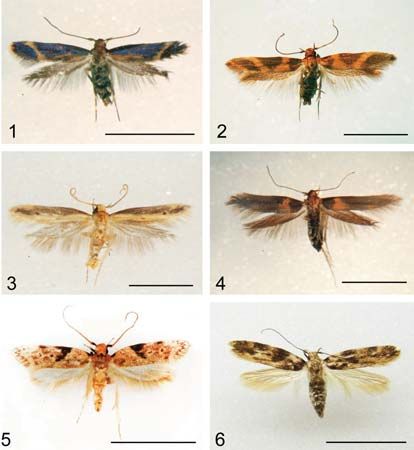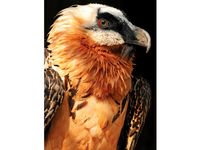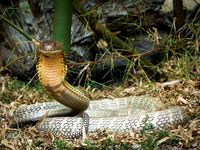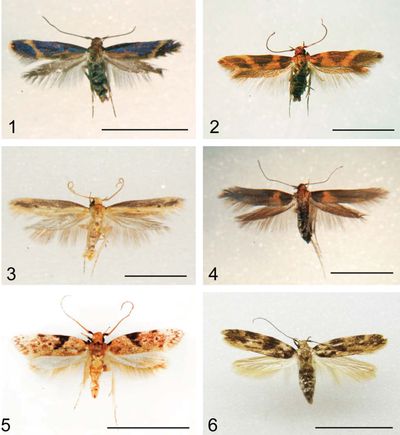Hyposmocoma
Our editors will review what you’ve submitted and determine whether to revise the article.
Hyposmocoma, moth genus containing more than 350 described species in the family Cosmopterigidae (order Lepidoptera). The group is endemic to the Hawaiian Islands and contains multiple species noted for their amphibious caterpillar stage, during which they can survive underwater for unlimited periods of time.
Hyposmocoma are typically small, with a total wingspan of less than 1 cm (0.4 inch). Wing shape is elongated, and the body and wings are of variable colour. Some species have a distinct margin of brush (bristlelike hairs) along the length of the hind wings. Larvae spin silk cases of different shapes that are utilized for shelter. The cases typically contain fragments of materials such as wood, shells, and algae, which enables the caterpillars to blend in with the surrounding environment.
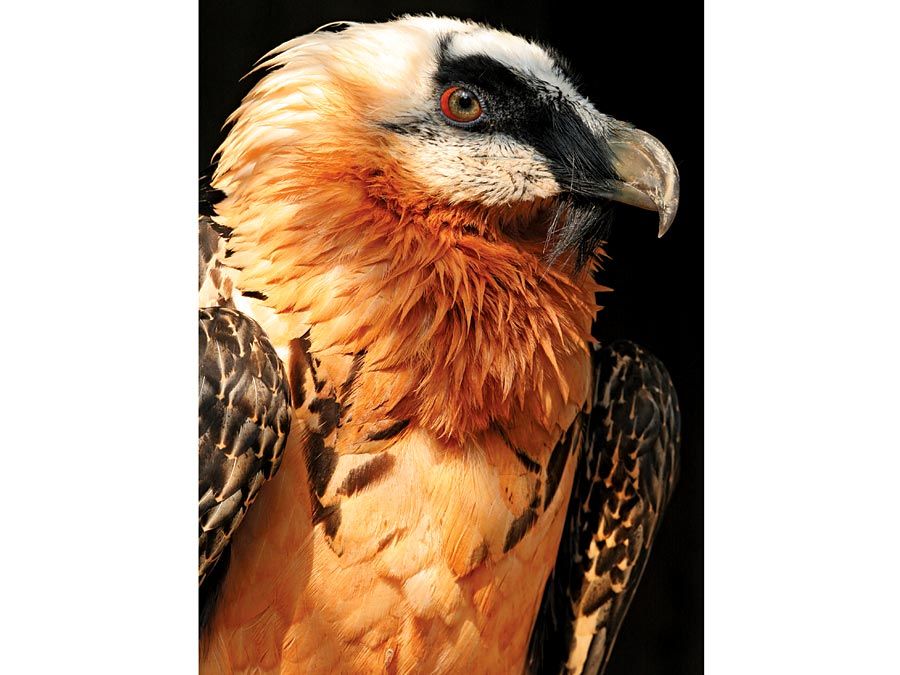
Hyposmocoma species are extraordinarily diverse in their habitat requirements and food preferences. For example, some species are found only in wet montane areas, such as those occurring on the islands of Maui and Hawaii, and other species favour dry forests, such as those on Lanai and on Laysan, a small landmass in the Northwestern Hawaiian Islands chain. Some larvae may feed on decaying organic matter such as rotting wood, whereas others may eat lichens or various parts of host plants. Larvae of the species H. molluscivora are predacious, feeding on terrestrial snails of the genus Tornatellides. H. molluscivora larvae trap their prey by using silk lines to bind the snails to leaves. The larva then enters the shell of the snail and feeds.
Amphibious Hyposmocoma appear to be endemic to mountain streams and surrounding riparian zones on certain volcanoes in the Hawaiian Islands. These species utilize silk to secure themselves to substrates when completely submerged in fast-flowing water. In place of underwater respiratory structures such as plastrons (air shells) and gills, which are utilized by other insects that are able to survive in water, aquatic Hyposmocoma are believed to possess specialized oxygen-diffusing pores on the abdominal surface of the body. Because the caterpillars rely on direct diffusion of oxygen, they are able to live only in fast-moving water, which contains far more oxygen relative to stagnant pools. In the montane regions of the islands, where flooding is common, the specially adapted pores allow the larvae to withstand periodic, often prolonged submersion in water. Underwater, the larvae tend to rest in holes in submerged volcanic rocks and rely on their silk anchors to avoid being swept away by strong currents. The amphibious caterpillars forage for food along submerged rocks when underwater and feed on dry lichens and algae when on land.
Because of the extreme geographical isolation of Hyposmocoma, the genus has been the subject of investigations into the processes underlying adaptive radiation—the evolution of an animal or plant group into a wide variety of types that are adapted to specialized modes of life. One trait that has provided insight into the evolutionary history of Hyposmocoma is the shape of the larval case, which displays a high degree of diversity among the different species. Three distinct case shapes have been identified: burrito, bugle, and cone. Analyses of mitochondrial and nuclear DNA (deoxyribonucleic acid) from species with different case shapes have suggested that each case type represents a distinct lineage (clade), indicating that aquatic capabilities have evolved three separate times within the genus. Hyposmocoma is the only group of terrestrial animals known to have experienced this many distinct evolutionary divergences into aquatic habitats.

